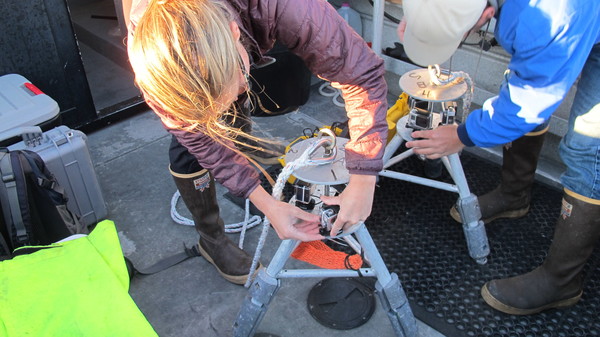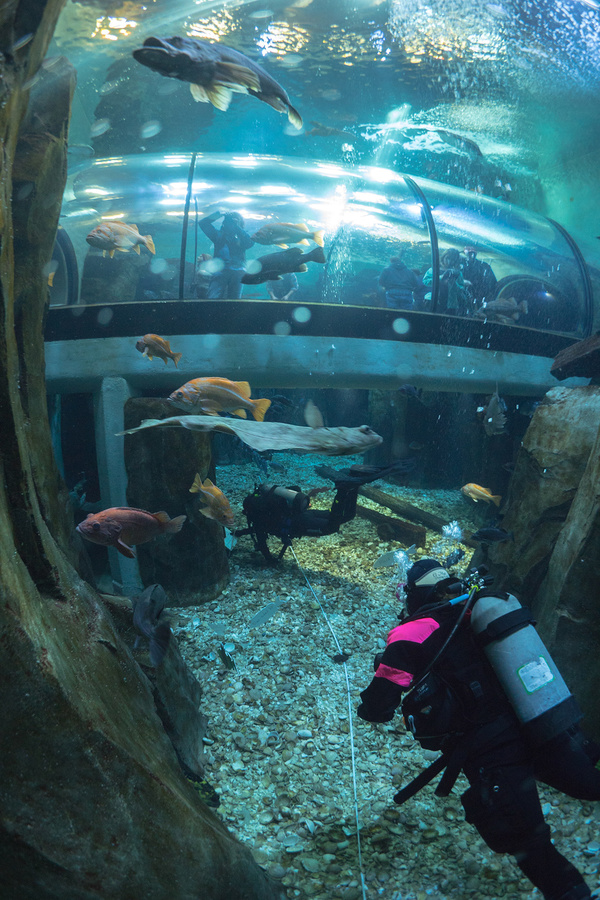WEBSITE OFFERS GLIMPSE BELOW SURFACE
Ever wondered what lies beneath the surface of Oregon’s ocean? Curious about marine scientific research? Our new Oregon Marine Reserves website provides a rare glimpse below the surface of Oregon’s ocean waters and a behind-the-scenes peek at scientists in action. The website, located at www.oregonmarinereserves.com, launched today.
The website revamp was headed up by the Oregon Department of Fish and Wildlife, and offers quick and easy access to research news, underwater photos and videos, and information about each marine reserve site along with a comprehensive look at the science and management efforts underway by ODFW and partners. Additionally, the website offers user friendly features such as interactive maps, e-notifications and downloadable GPS coordinates. You can also browse the website's resource library where you will find research plans, reports, policy info, vessel contract bid packages and brochures.
We hope you explore the site and discover there's more beneath the surface.

Oregon’s rocky reefs are highly valued as productive habitats for nearshore fishes. But, collecting information about these important areas, and the fish that live there, has become a challenge for researchers. These shallow, rocky areas can be difficult to access and murky with poor visibility. From a fish’s standpoint, that’s a pretty ideal habitat. However, it leaves researchers scratching their heads as to how to best collect data that is integral to monitoring nearshore waters.
Traditional research techniques, such as trawl surveys, are not appropriate (trawls get snagged over rocky habitat). Other research techniques, such as hook-and-line surveys, are an option, but this extractive method selects for larger individuals (juveniles can’t bite a large hook) and offer limited habitat data. Video surveys offer a cost-effective, non-extractive means for collecting valuable data on the entire fish population including smaller individuals and give researchers a glimpse of the habitats these fish call home. For that reason, video surveys are an integral component of nearshore ocean research and monitoring in Oregon.
ODFW has a strong research arm that has paved the way for premier video survey method development. Recently, the ODFW Marine Reserves Program completed a pilot study designed to test a new camera video lander configuration that is both light-weight and cheap to build to more readily survey shallow, rocky, nearshore reefs. However, this survey method isn’t without its own suite of challenges.
Like all scientific research, there are lingering questions about potential biases, such as: are different fish species attracted to the camera, or do they avoid it? Or, does using bait make it easier to identify fish species or allow us to see more species? And, what is the optimal amount of time a camera system should sit on the ocean floor?
Results from the pilot study conducted by the ODFW Marine Reserve Program addressed these exact questions and had some surprising results. The Program has submitted this research for publication in he Journal of Experimental Marine Biology and Ecology. Read more to find out the results.

Inside looking out -- Scientific divers brushed up on their skills at a recent training offered by the ODFW Marine Reserves Program, the Oregon Coast Aquarium and Oregon State University. Read more for an update on the training.

KEEP UP WITH OREGON MARINE RESERVES NEWS
|